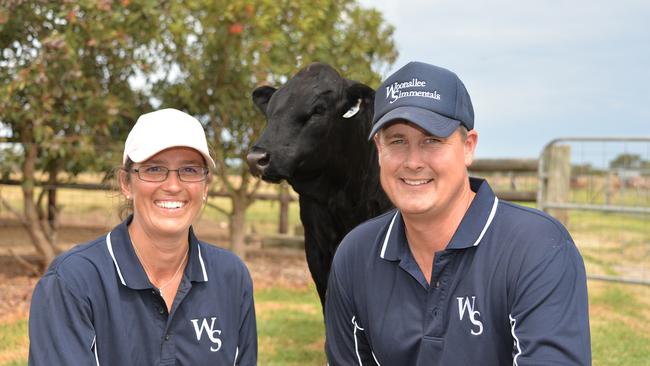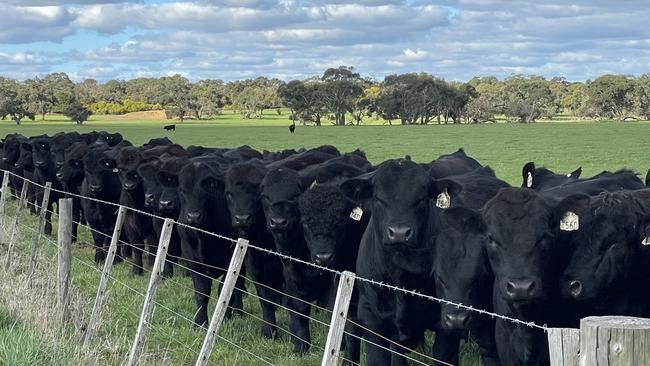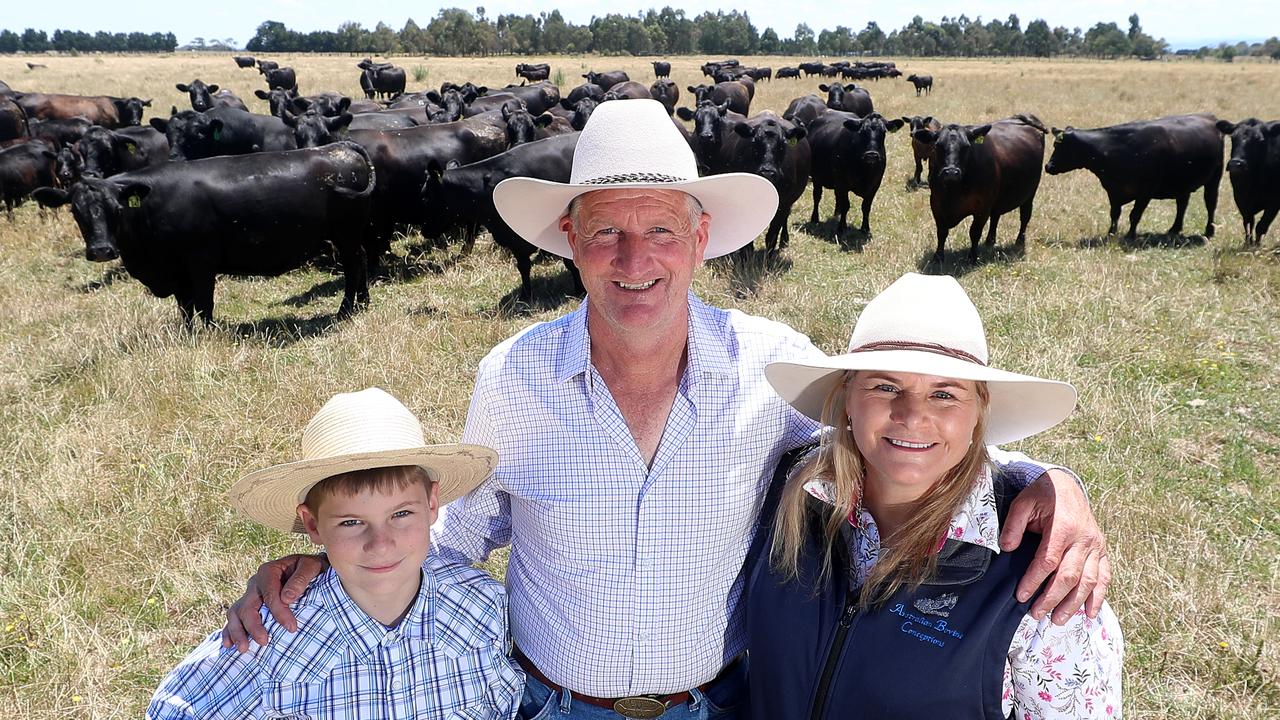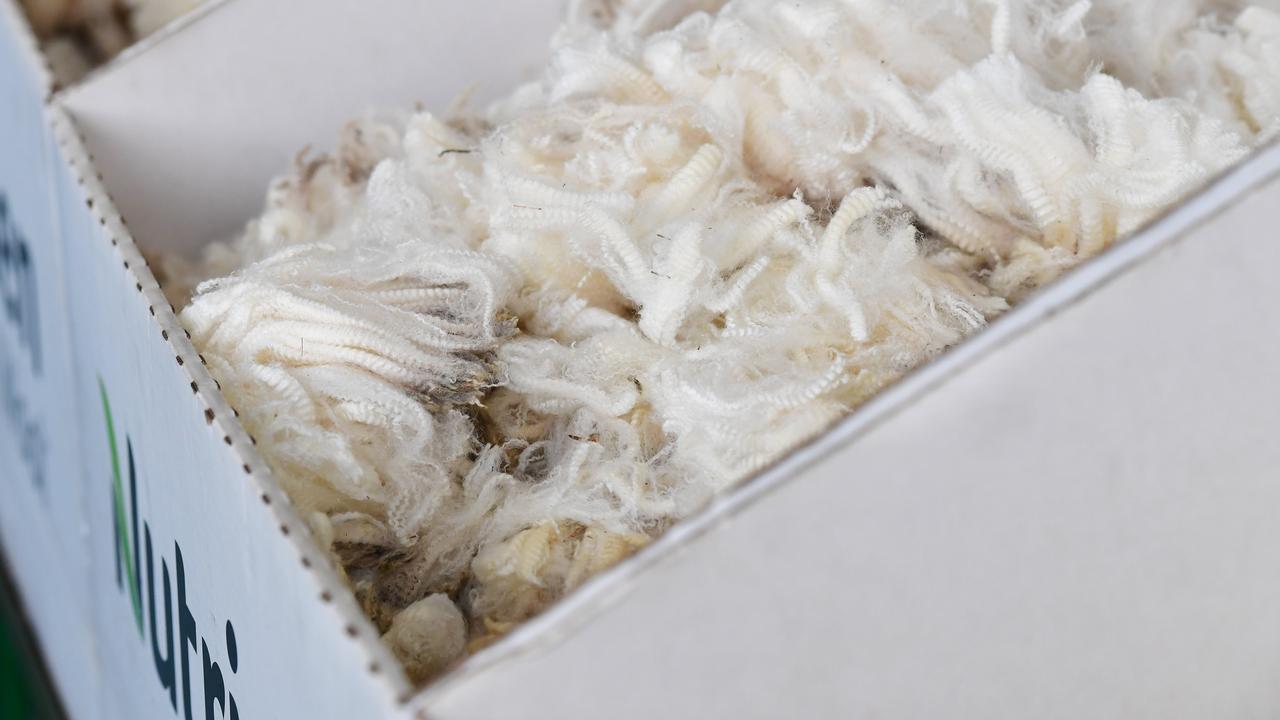How Woonallee Simmentals are making their mark in the beef industry
The southern beef world is dominated by one breed, but there’s good reason to look at Simmentals according to Woonallee.

Growth, milk, carcass, muscle and better margins for clients are why the Baker family believe their Woonallee Simmental stud has retained and grown its market share for sires.
And in a southern Australian beef world that is increasingly insular in terms of breed, it’s the outcrosses that can offer something extra, they say.
Woonallee Simmentals is run by Tom and Lizzy Baker at Millicent, South Australia, an operation with 800 breeding cows selling more than 250 bulls at two auctions and through private sales each year.

Their record in terms of sales is stellar – their sire Woonallee Los Angeles still holds the record for the highest priced bull in the breed making $160,000 in 2017.
Yet they are realists too, and in a quest to satisfy demand, moved to establish a line of Black Simmentals and then SimAngus sires for their commercial breeders alongside their original herd.
But overarching all their bull breeding, whether it’s traditional Simmentals, Black Simmentals or SimAngus is structural soundness, good feet and longevity.
The original Woonallee stud was established more than five decades ago, and Tom said the benefits of infusing Simmentals into other breeds had offered increased growth, feed efficiency and milk into herds.
But as more commercial producers looked for black cattle, they moved some of their operation that way.
Now, the Woonallee herd has 650 Black Simmental cows and 150 traditional red Simmental breeders.
And when they hold their sale on February 13, 21 of those bulls on offer will be traditional Simmentals and the other 88 Black Simmentals and SimAngus.
Tom acknowledges his potential customer list numbers in the hundreds rather than thousands, but said this only made the business smarter and better at what it did.
And that has included the move into Black Simmentals, where quality has driven a global search for genetics.
“We have worked hard at breeding the Black Simmentals, to the point of making regular trips to the United States and Canada in the past 15 years to source new genetics,” Tom said.
But they are ruthless too in their quest.
If a bull has been used that produces something they are not happy with, whether it’s feet or milk or structure, that sire line is removed in a take no prisoners attitude to breeding what they feel suits the industry.
“What we want to offer is a bit more weight for age, a bit more marbling, feed efficiency and milk,” Tom said.
“We want our clients to not only be able to sell steers with more weight by using the genetics, but also have a positive impact on their females too.
“The extra milk is something that the breed is known for, and there is definitely a following for Black Simmental, or Black Simmental-cross heifers.”
All of the Woonallee Simmental bulls are performance recorded, not in Breedplan but in the United States system known as International Genetic Solutions or IGS.
It tracks the things that Breedplan does, and one of those that the Bakers look at carefully is birth weight.
“Ideally we want a bull that has figures which are moderate or low for birth weight and then has explosive growth figures,” Tom said.
“We are mindful that Black Simmental bulls can be used on heifers so if we can keep birth weight moderate, even average growth rate will be an advantage for growth.”
And its an emphasis on structural soundness that ironically is working against Woonallee in some ways, given that bulls from their stud are known for their longevity.
“It’s great that our bulls last so long, albeit that we don’t see some of them every year because the bull is still going,” Tom said.
“Bulls can be expensive and those doing the numbers would realise that a bull that only lasts for one or two seasons can be a big cost to the production system.”
Their record breaking bull typifies how the bulls last. Sold in 2017 as an 18-month old sire, Woonallee Los Angeles is still working at almost 10 years and still naturally joining cows for his owner.

This year’s bull line-up has faced a tough enough season, but again Tom sees the positives.
“We run our bulls in big contemporary groups, which puts selection pressure on them,” he said.
“We know as an industry that doing show-like preparation for bulls to have them ready for sale day is not sensible.
“Our bulls went onto silage in December, not dissimilar to what a commercial producer would do with their herd, and we’ve been really encouraged with how they have performed since then.
“We feed to show the bulls’ genetic potential and this should set them up for their lifetime.”
And the tough season has also highlighted how well their herd has performed as breeders.
“We’ve also been shocked, to be honest, with the pregnancy rate in our cows of 90 per cent which were not expecting given the dry period we had from March until August,” Tom said.
And when it comes to this year’s auction, Tom knows his loyal commercial base will come and buy, but encouraged others to do the numbers.
“Extra kilograms when selling weaners, better growth, more milk and longevity in the bulls, all at $2000-$3000 less than what you can buy other breeds for makes financial sense,” he said.


